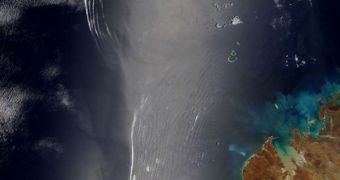Astronomers are currently working on refining a new procedure aimed at making the search for planets outside our solar system more efficient. They are focusing their attention on detecting sun glints, which may serve as indicators that a world contains vast amounts of liquids on its surface.
Recently, experts working in this field got a reminder of precisely how effective sun glints can be at revealing the location of a planet featuring liquid water on its surface.
Scientists analyzing the date sent back by the NASA Deep Impact spacecraft discovered bright flashes of light emanating from our planet, as the probe was moving away from Earth.
The flashes were produced as sunlight bounced off the vast oceans covering 73 percent of our planet's surface, and hit the space probe's cameras at a particular angle.
This occurrence reminded astronomers that the same type of phenomenon could be used to determine whether a distant exoplanet features liquid water (or other liquids) on its surface.
According to physicists, when contemplating things at a planetary scale, only oceans and vast ice sheets meet the requirements necessary to produce a sun glint effect. In order for mountains to reflect light in this manner, they would have to be flat too.
“But these sun glints are important because, if we saw an extrasolar planet which had glints that popped up periodically, we would know that we were seeing lakes, oceans or other large bodies of liquid, such as water,” explains Drake Deming.
“And if we found large bodies of water on a distant planet, we would become much more optimistic about finding life,” adds the expert, who is based at the NASA Goddard Space Flight Center (GSFC), in Greenbelt, Maryland.
He is also the deputy principal investigator of the Extrasolar Planet Observations and Characterization (EPOCh) part of EPOXI, the extended mission of the Deep Impact spacecraft, Daily Galaxy reports.
Using this instrument, the team was also able to simulate how Earth's characteristics would appear to detectors if the whole body was an exoplanet. They did so by looking at its surface from a distance at which the planet appeared as a tiny, blue dot.
“This allows us to properly simulate what we would have observed if Earth were an extrasolar planet,” concludes the principal investigator for EPOXI, Michael A'Hearn.

 14 DAY TRIAL //
14 DAY TRIAL //